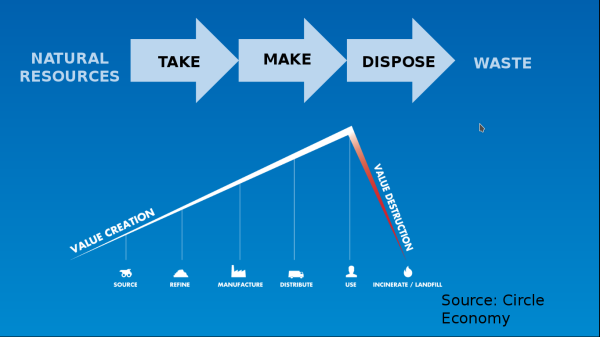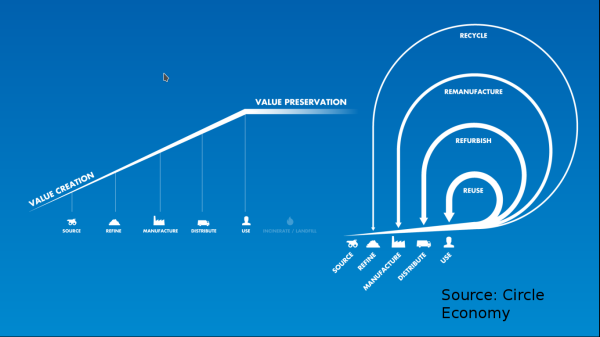Circular economy in building
… or squaring the circle in the building industry
Our world and lifestyle put a high pressure on natural resources, environment and ourselves, human beings.
What to do ?
Reuse, repair, recycle.
All of this brings new constraints : structures have to be, indeed, reusable ! Which is not obvious, given that builders are often focused on their immediate needs and don’t see the good in including other considerations.
Yet, those new considerations often increase the project’s general quality, as well as reselling the building in the end.
This leads building process to be reorganized, with better integration between designers, builders, architects, engineers, users, owners along all buildings lifecycle.
Producing goods consume a lot of energy and resources. Each step, extraction, refinery, transport, etc, add value to those goods. This energy, «stored» as embodied energy should be saved rather than wasted.


Longer lifecycle
If your building is to be used on a longer period, it needs to be easily adaptable. Here is a new trouble: how to design a building for usage we don’t know about yet.
Here, one can think the designer’s role as that: design a structure to answer today’s needs, with the less restrictions possible to future users.
The structure should for example be more modular, to be transformed easier from dwellings to offices and reverse.
- use light wooden partitions
- limit vertical load-bearers: columns or surrounding walls if you want to keep a closed structure, rather than distributed heavy interior walls.
- spread the networks in slabs (with traps for access to electric and computing outlets) and vertical load-bearers
There are still commodities to worry about: plumbing. One can hardly have water supply and sewerage every ten meters like electric grid. Same as heating.
Reuse existing structures
Existing structures, which were not designed to fit ease of destination change, can still integrate new lifecycles.
It is for example easy to set light structures inside warehouses. These structures are self-insulated and self-networked with water, electric and internet grids. The warehouse insure calm atmosphere (protection to wind and rain).
That sort of installation, fast, cheap and easy, is really efficient and perfect for start-ups, workshops, commercial workplaces…
Reuse structures’ components
If you cannot reuse the structure itself, so you should reuse parts of it, meaning you have to deconstruct if rather than demolish it.
In old dwellings, mouldings, doors (including frames), chimneys and flaps can still have value. In that case, it could be worth to spot, dismount and properly store to resell them later.
Use … non-obvious materials
One can use materials from recycling or other economic sectors in building or renovating. For example straw can be a good insulating material. Compressed vegetal waste can be good building material to light wooden structures.
It will soon be a mantra : save energy, think long-term.